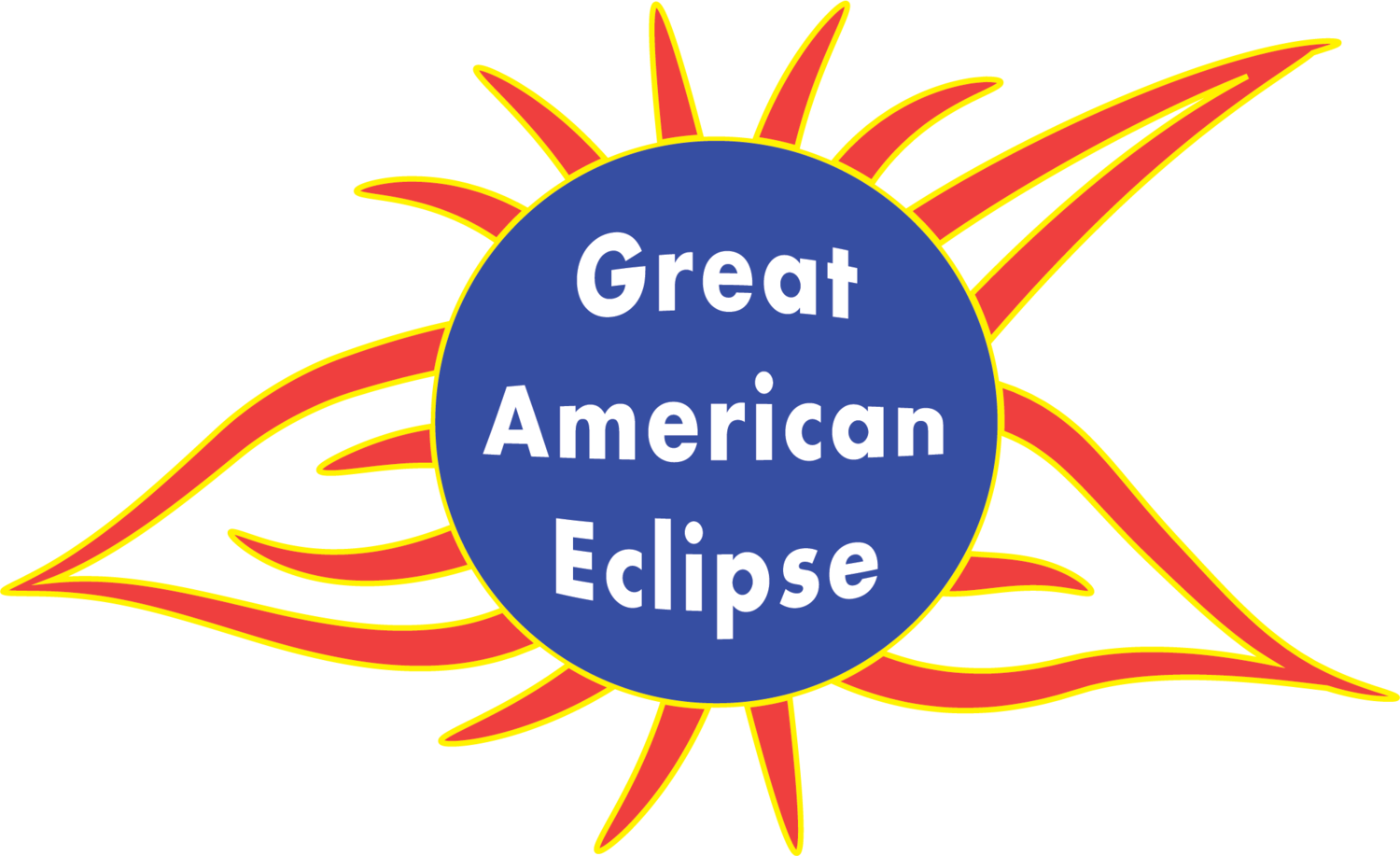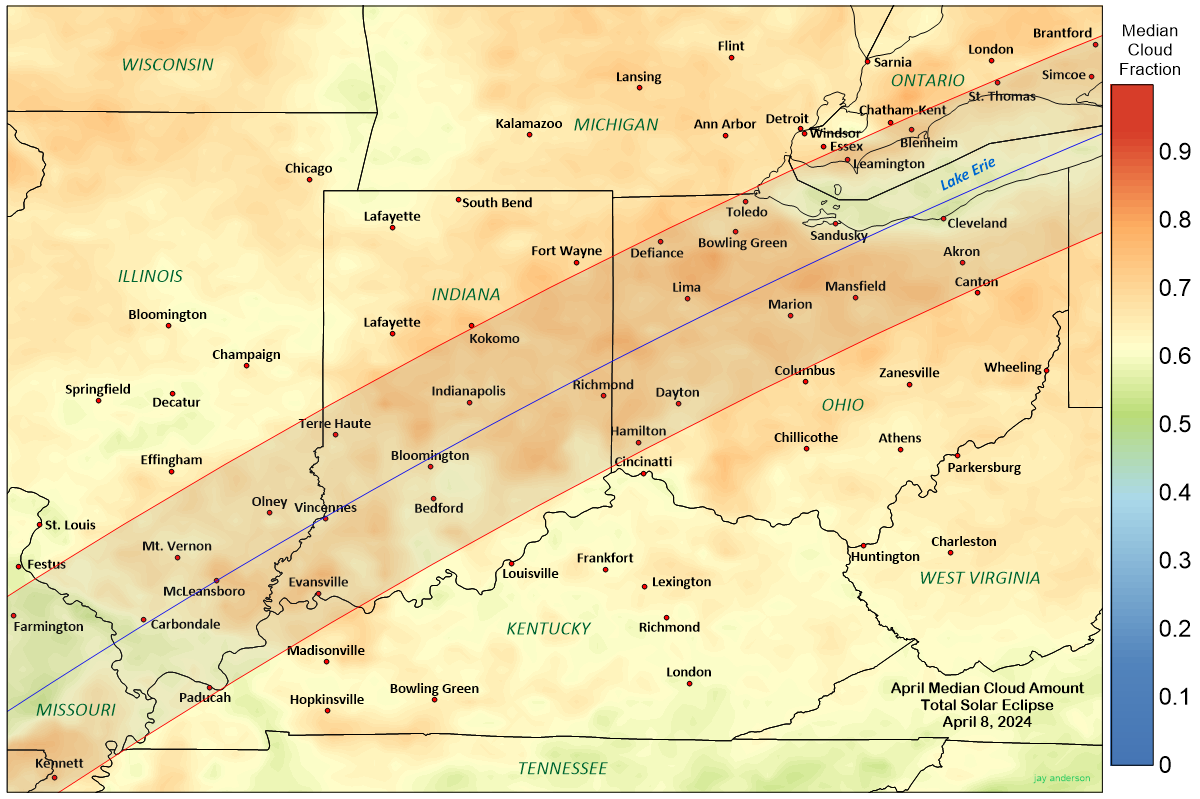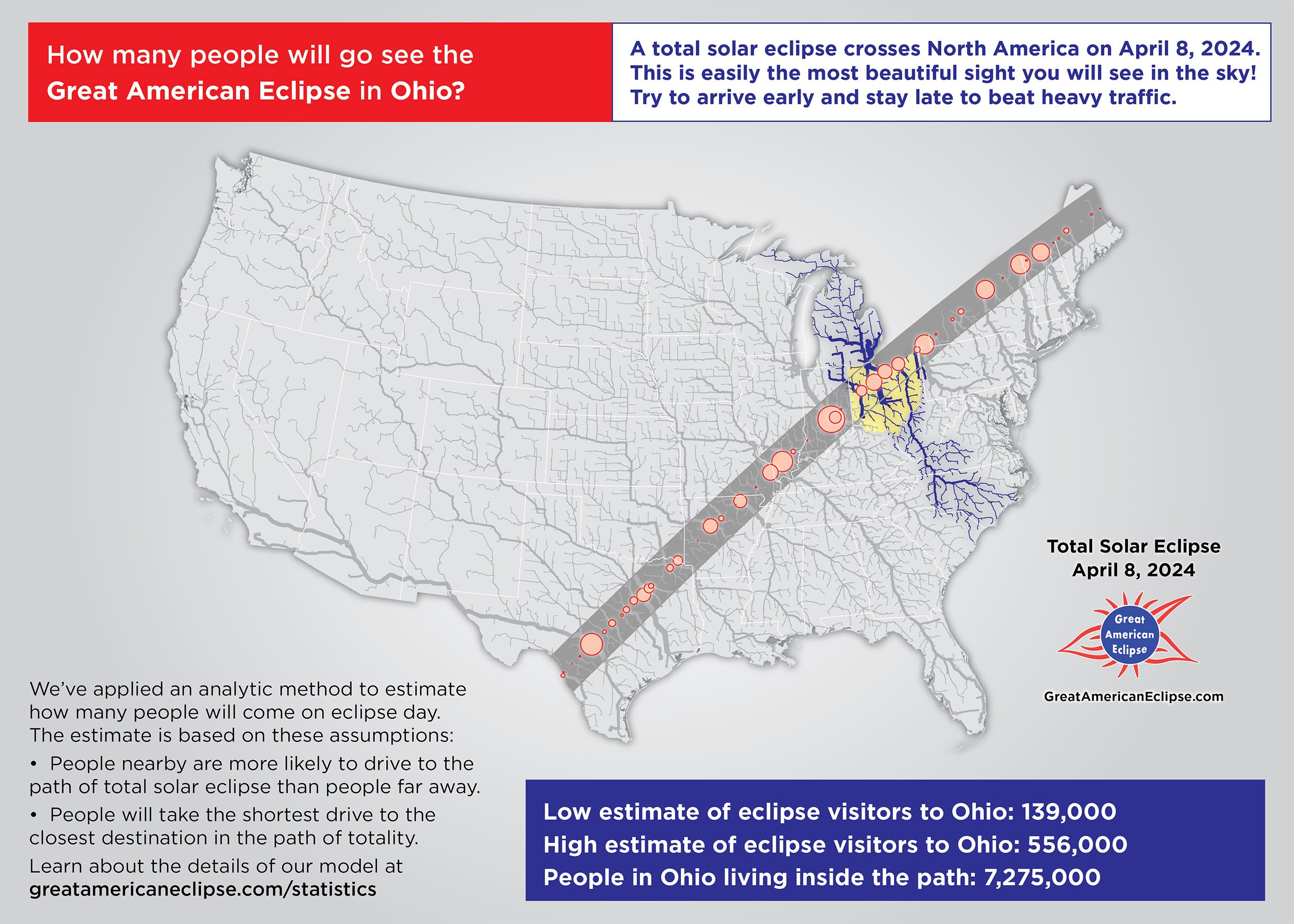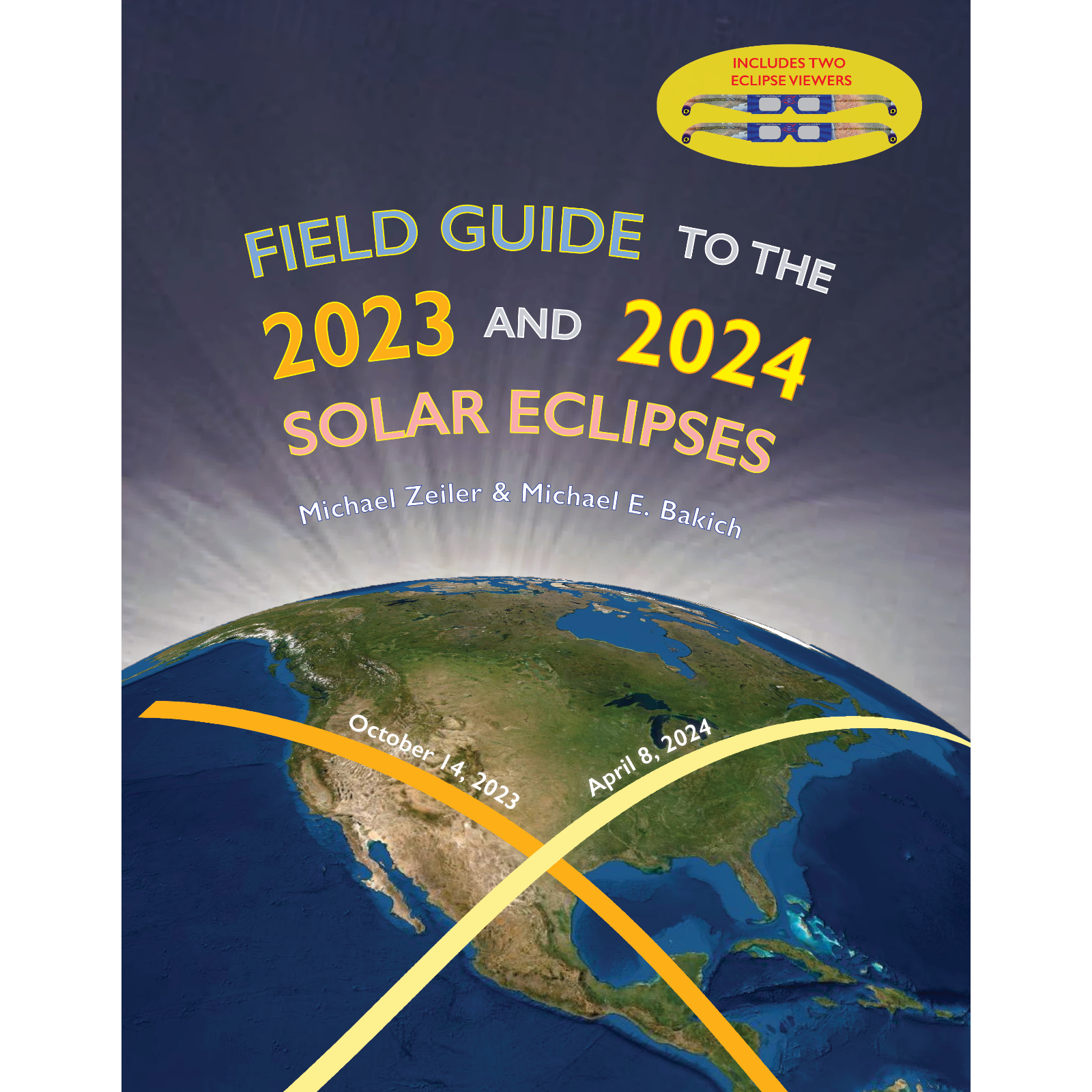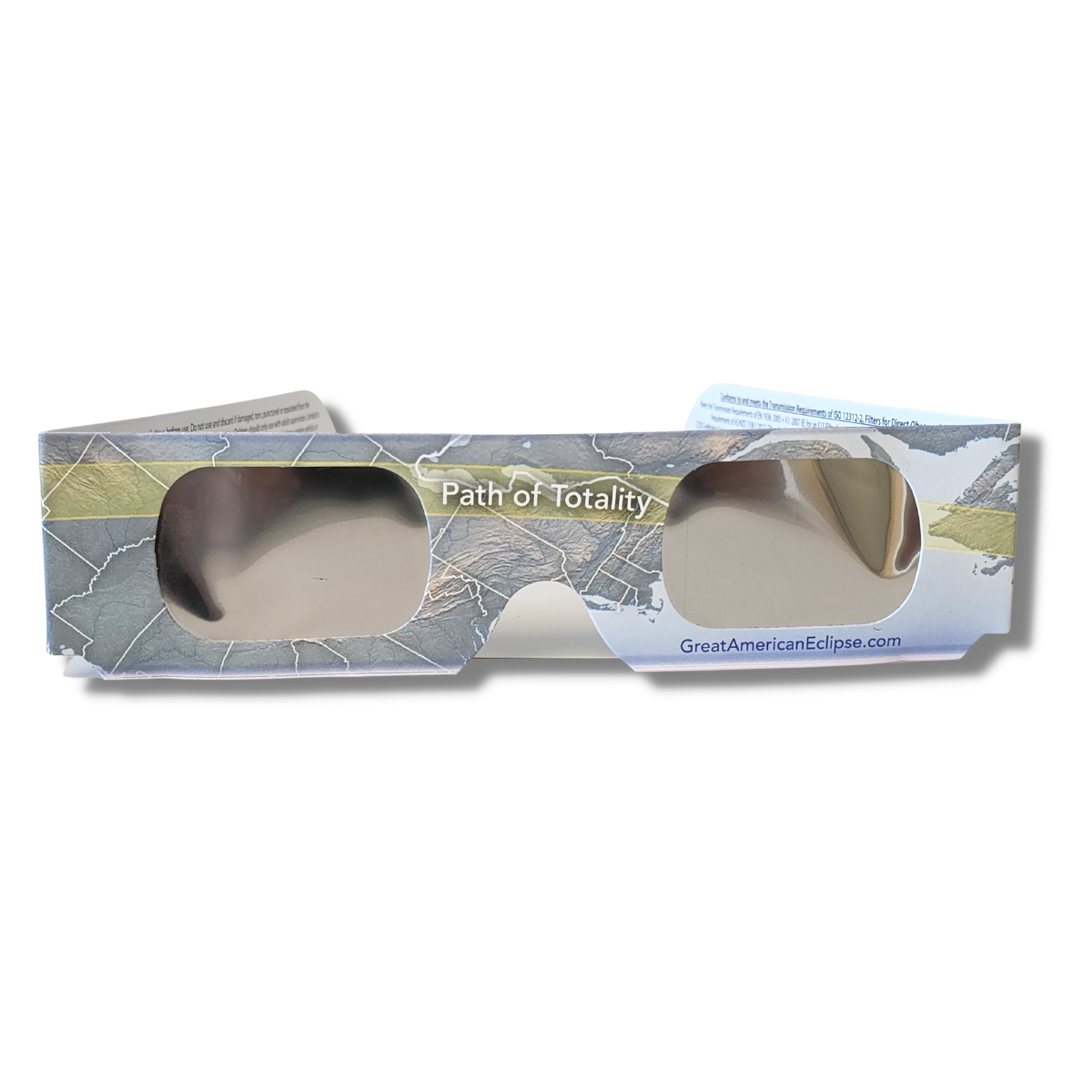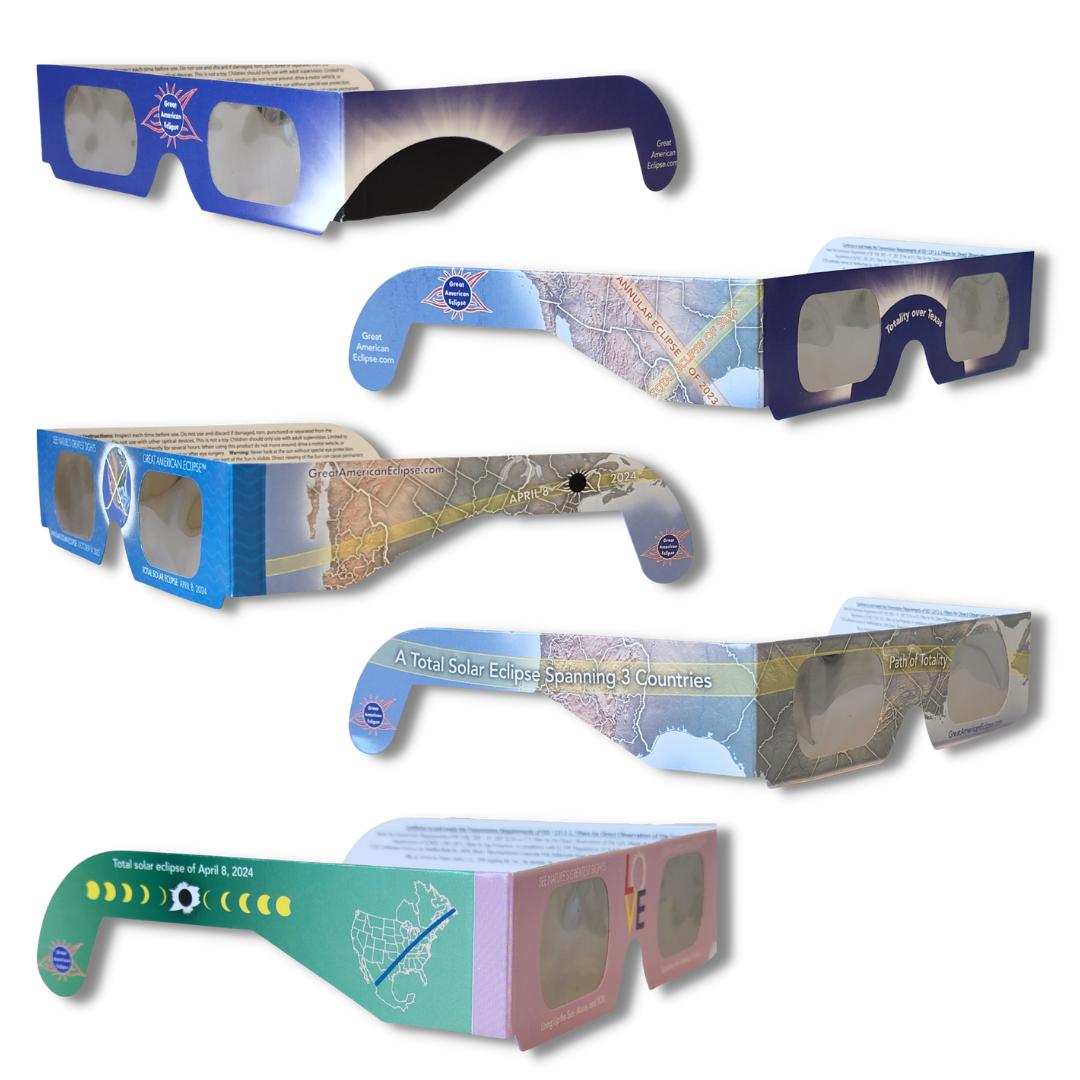Come fly with the Moon’s shadow! Everyone inside the shadow will experience the breathtaking sight of the Sun’s corona during the total solar eclipse of April 8, 2024.
This animation simulates a view of the total eclipse from a spacecraft 100 miles high, chasing the shadow along its arc.
Total Solar Eclipse over Ohio on April 8, 2024
this map is available at www.greatamericaneclipse.com/eclipse-maps-and-globe/ohio-2024-state-map
A total solar eclipse comes to much of Ohio! Be prepared to see the greatest sight nature offers, a total eclipse of the Sun. Be sure to get inside the path of totality for the full experience.
Simply put, a total eclipse of the Sun is the most beautiful sight you will ever see in the sky. Nothing can prepare you for the amazing sight when the sky suddenly darkens and the Sun’s corona shines in the sky. No photograph can capture the stunning beauty of a total solar eclipse, you must see it for yourself. Learn about the basics of the solar eclipse at greatamericaneclipse.com/basics and find out more about the wonder of eclipses at greatamericaneclipse.com/splendor. Find your copy of this map here.
Cleveland is one of the largest cities inside the path of totality. Dayton, Toledo, Bowling Green, Akron, and other cities will also witness totality. Cincinnati, Columbus, Canton, and Youngstown are very close to the path and we expect many people in these cities to make the short drive north on eclipse day. The city of Wapakoneta, birthplace of Neil Armstrong, will also experience totality and is notable as the site of the Armstrong Air & Space Museum.
For eclipse viewing, mobility is essential especially in case of inclement weather. Within Ohio, Interstate 75 provides north-south access from Dayton to Toledo. Interstate 90 parallels Lake Erie from Toledo to Cleveland and Ashtabula. Interstate 71 from Cleveland to Cleveland will be another key access route. Ohio is graced with many excellent highways and infrastructure for eclipse visitors.
The total solar eclipse visits Ohio on April 8, 2024 beginning at 3:08 pm EDT with the final exit of the Moon’s shadow from the state at 3:19 pm EDT. Through Ohio, the speed of the Moon’s shadow will accelerate from about 1995 miles per hour to about 2290 miles per hour.
Tips for viewing the eclipse
Get your eclipse glasses early! They will sell out in the weeks before eclipse day. We offer eclipse glasses which are ISO 12312-2 certified and made in the USA at www.greatamericaneclipse.com/eclipse-viewing/eclipse-viewing-glasses
Learn the simple methods to safely view a solar eclipse. Visit eclipse.aas.org/eye-safety for detailed instructions.
Plan ahead. If you choose to stay in a hotel, be aware that most will sell out. A perfect guide to planning your eclipse is our field guide, greatamericaneclipse.com/books/field-guide-to-the-2023-and-2024-solar-eclipses.
Get to your destination early and try to spend eclipse night at or near your viewing location. Expect the highways and freeways to be extra busy in the aftermath of totality.
Be self-sufficient. Fill up your gas tank and bring food and water.
Check the local TV weather reports as eclipse day approaches. The meteorologists will give you great advice on viewing the eclipse and whether you may need to relocate. We recommend eclipsophile.com as the essential site for eclipse meteorology.
Unless you are an experienced photographer, we recommend that you not attempt photography during the eclipse. You will be so stunned that it will be difficult to operate a camera. If you choose to do photography, visit Fred Espenak’s MrEclipse.com for advice.
Animation of the Moon’s shadow
Our animation shows you exactly where the eclipse will be total, moment-by-moment. The maximum duration shown is for locations along the very center of the eclipse path. This animation is built using data from retired NASA astrophysicist Fred Espenak (eclipsewise.com) and eclipse expert Xavier Jubier (xjubier.free.fr). You may freely share our maps and animations on social media and web sites, we just ask for a live link to our website.
Eclipse weather in Ohio
Courtesy of eclipsophile.com
April weather in Ohio will be challenging and according to the pre-eminent eclipse weather website eclipsophile.com. The percent of cloud cover on average is between 60 and 70%. They describe this dynamic condition along Lake Erie: “In April, the lake temperatures are likely only a degree or two above freezing (there is often ice on the lakes). On unsettled days, the afternoon often blossoms with cumulus and towering cumulus clouds and sometimes thunderstorms. Those clouds rely on heating from below, so the cold air over the lakes and the nearby lee shore suppresses the heating and the associated convective buildups and helps keep skies cloud free over the lake and for a few kilometres inland. This clearing is best seen in the satellite examples toward the end of this study.”
Our advice is to stack your odds by paying attention to short-term weather forecasts and if poor weather is forecast, jump in your car very early on eclipse day (or the evening before) and drive either to the southwest or northeast to chase after clear skies. You will never regret the effort to seek out a clear view of a total eclipse of the Sun, it will register in your memory all your life.


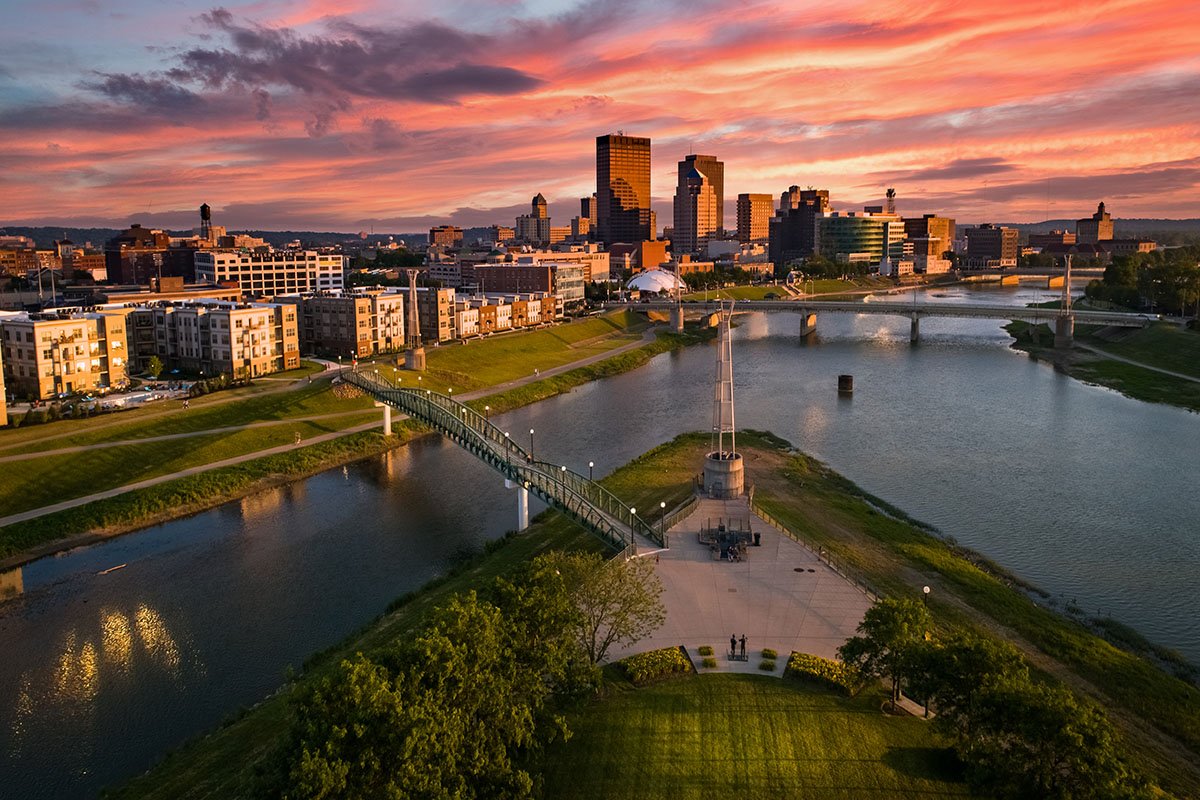

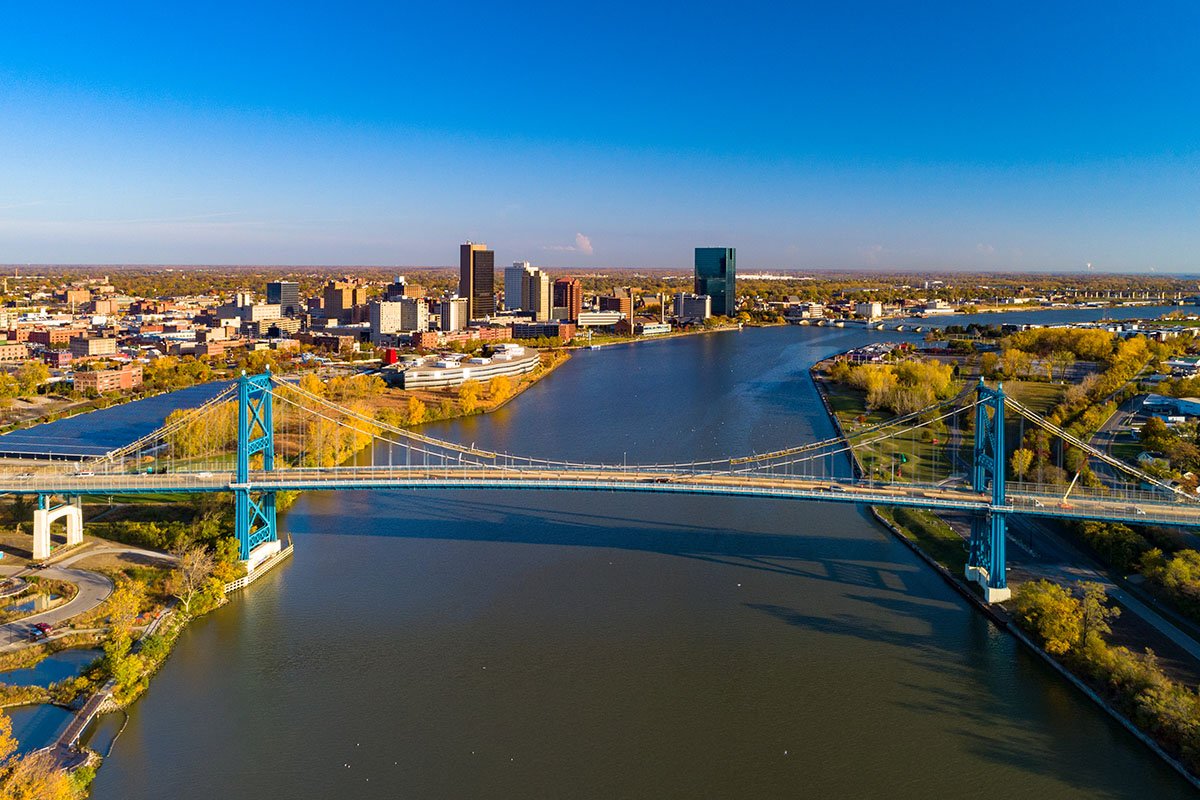
How many people will come to Ohio to see the eclipse?
As the total solar eclipse in 2017 proved, the eclipse will be a magnet for millions of people across the nation. We’ve analyzed population distributions and the national road network and present our rough estimate of how many people will come to Ohio for the eclipse. Learn more about our methodology at greatamericaneclipse.com/statistics.
Additional resources for the Ohio eclipse
These are websites with additional information on the eclipse in Ohio. If you would like your website to be on this list, email us at media@greatamericaneclipse.com
